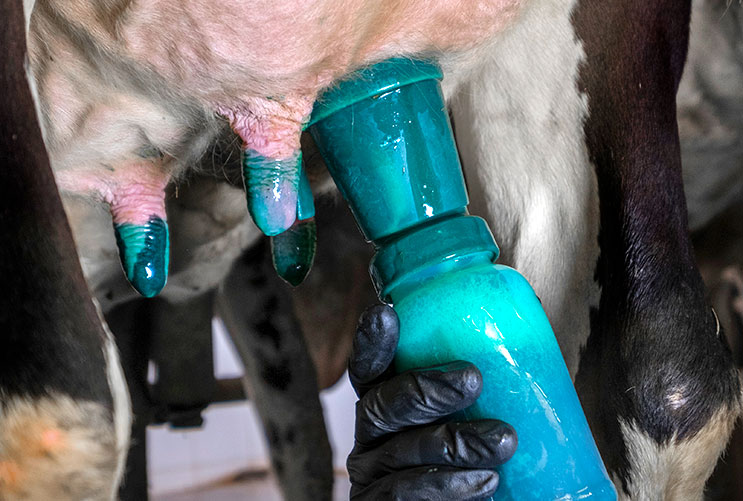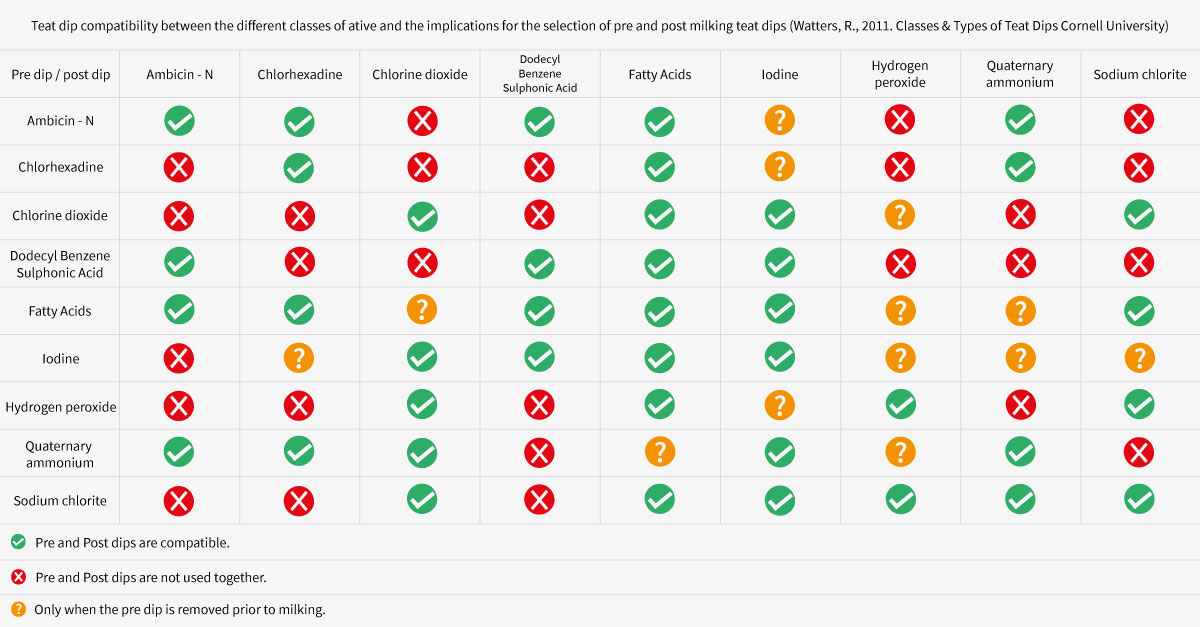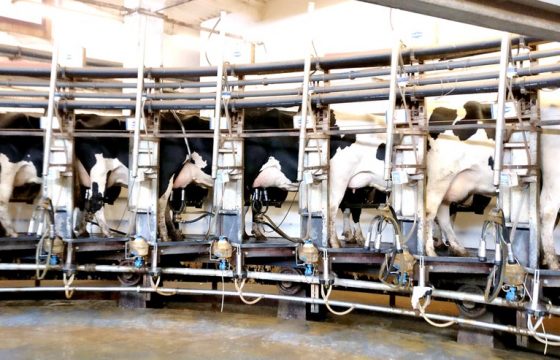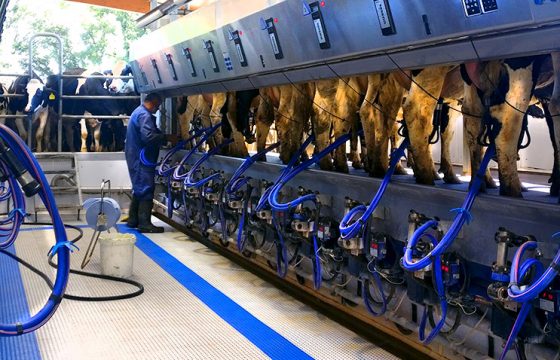Teat dip disinfectants: The “good”, the “bad” and “the ugly” on each type
Having a better understanding of the disinfectants available in the market and how they work can help you to eliminate the perception of teat dip failure and resistance to the active. Let’s look at each product analyzing the advantages and disadvantages of each disinfectant so you can make a smart decision, being able to preserve udder health on the farm.
Pre and post milking teat dips
In the last entry, we were explaining some basic points when choosing a teat dip.
Today we will look at the differences between pre and post milking teat dips (different responsibilities and desired outcomes) and then highlight a theory of negative interactions between popular actives in a teat dip.

The truth is that we tend to make the mistake of thinking that a product stands alone in managing mastitis.
This is important because if we use the wrong formulations we cause bigger problems (residues entering the milk, irritation to the skin, interference with product stability, etc.).
It is important to know that the choice of active for a pre or post milking teat dip or both is set by legislation, but are in fact not set in stone for its method of action or perceived efficacy.
 Table 1: Properties and differences of pre and post milking teat dips (Watters, R., 2011. Classes & Types of Teat Dips Cornell University) to aid in the management of udder health and the prevention of mastitis.
Table 1: Properties and differences of pre and post milking teat dips (Watters, R., 2011. Classes & Types of Teat Dips Cornell University) to aid in the management of udder health and the prevention of mastitis.
Are the actives in the respective dips actually compatible?
Table 2 illustrates the type of interactions (synergistic, cautionary and contraindications) that can occur between the different actives.
These may vary from reality as they are based solely on theoretical chemical interactions (Watters, R., 2011), and does not necessarily depict what occurs in the field (clear chemical burns, chaffing of the teats, etc.).
It was noted that chapping of the teats occurred when different pre and post milking teat dips were used in combination (Hemling, T. et al., 2002).
 Table 2: Compatibility of pre and post milking teat dips (Watters, R., 2011. Classes & Types of Teat Dips Cornell University) to aid in the management of udder health and the prevention of mastitis.
Table 2: Compatibility of pre and post milking teat dips (Watters, R., 2011. Classes & Types of Teat Dips Cornell University) to aid in the management of udder health and the prevention of mastitis.
Reality can differ as there is a dilution aspect: short contact times, washing effect from the drying step and the milking machine, the time of cluster attachment (+/-5min), the long time period between subsequent milkings (barrier forming post milking teat dips), and the type of backflush in the parlour.
The take home message here is: the active substance, is not the only factor when it comes to the teat dip, but rather the formulation and the management surrounding the active in the teat dip.
Remember: By using the right product at the right time we avoid causing further damage to the teats, e.g. during winter is better to use a fast drying active to avoid the chill factor, or to address the skin condition with the emollients to reduce wrinkles and cracks that can aid in the maintenance of bacteria like Staph. aureus on the skin.
Author:


